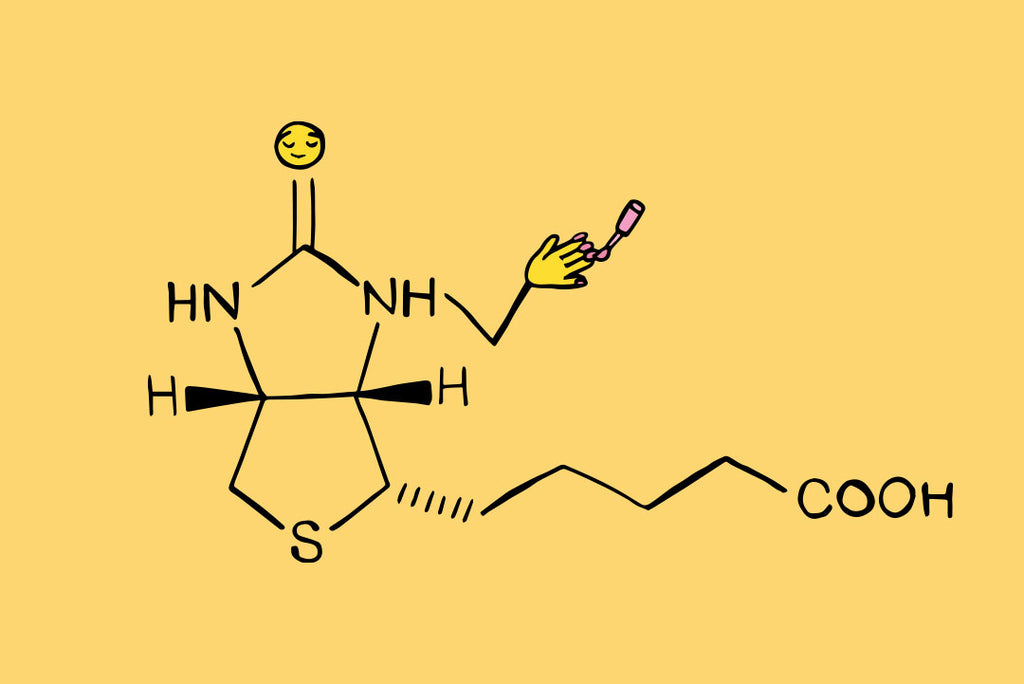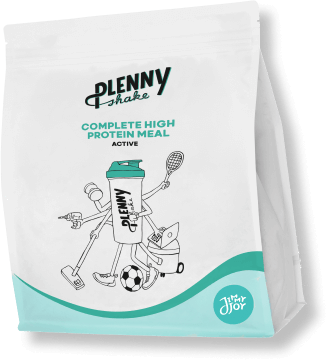As important as macronutrients are for providing energy, micronutrients are essential for the well function of the body. Micronutrients are one of the major groups of nutrients that our body needs. They are not a source of energy but they are essential for our body to work properly.
So who are these powerful small nutrients? Why are they good for us and how can we incorporate them in our diet? Keep reading to know what they do apart from making our body function properly.
What are micronutrients?
Micronutrients are key nutrients that cannot be synthesized by the body on a daily basis, such as vitamins, inorganic minerals and trace elements so this makes its dietary supply essential. The amount that the body needs of these elements varies but it is smaller in quantity than the macronutrients [1].
Why are micronutrients good for you?
Micronutrients play different roles in the body such as cellular functions, neurotransmission, fluid balance or tissue structure, among others [1]. We will cover the functions of each micronutrient found in our products individually, together with the sources where they can be obtained and the amounts present in our products, in relationship to EFSA’s established Daily Recommended Intakes for an average adult.
An important term we want to define before we start its bioavailability. In order for a nutrient to have a health benefit, the compound of interest, needs to survive early digestion steps so that it can reach the target tissue of action, in other words, it needs to make it to a specific point of absorption in the body, and the proportion of a nutrient that is absorbed from the diet and used for normal body functions is called bioavailability. The factors that can influence this are shown in the figure below:
Vitamins
Vitamins fall into two groups depending on whether they are fat soluable or water soluble. Examples of fat soluble vitamins are vitamin A, D, E and K and examples of water-soluble vitamins include B and C [1].
Fat Soluable Vitamins
Vitamin A (added as retinyl acetate)
There are two forms of vitamin A that are available in the human diet: preformed vitamin A and provitamin A. Preformed vitamin A is mostly found in foods from animal sources, including dairy products, fish, meat (especially liver) and in fortified cereals. Most dietary provitamin A comes from leafy green vegetables, orange and yellow vegetables, tomato products, fruits, and some vegetable oils [3].
Vitamin A gets stored in the liver until further use, and metabolites of vitamin A are essential for vision, immune function, epithelial barrier function and cell differentiation. The latter meaning that cells are converted into specialized cells so they can better perform a specific function [4-5].
Vitamin D (added as cholecalciferol)
Vitamin D is a substance needed in humans and other vertebrates to maintain blood calcium levels stable, which allows to keep normal skeleton, cellular functions and muscle contraction [6]. This vitamin is naturally present in very few foods, a reason to which you can find most products fortified with this small but powerful nutrient. Vitamin D is also produced internally when ultraviolet rays from sunlight touch the skin, which triggers its synthesis.
Curious fact: Vitamin D obtained from sun exposure, food, and supplements is biologically inactive and must therefore undergo two chemical reactions (hydroxylations) in the body for its activation.
You can find Vitamin D in the flesh of fatty fish, beef liver, cheese, and egg yolks, primarily in the form of vitamin D3, which is the most bioavailable form of it. In some mushrooms vitamin D2 can be found, and in fortified foods like the Jimmy Joy products which contain vitamin D3 from lichen, a vegan source originated from algae and cyanobacteria. [7]
Vitamin E (added as DL-alpha tocopheryl acetate)
Vitamin E (or α-tocopherol), is essential in the human body for its antioxidant activity, which prevents the adverse effects of free radicals. Free radicals can be formed during normal internal processes in our cells and tissues (e.g. mitochondria activity), but also, from external sources (e.g. cigarette smoke). These free radicals have an unpaired electron which to be stable it will look for another electron to pair with, and it will do so by looking in its surroundings. Problems arise when free radicals steal electrons from important cell molecules in the body like DNA or proteins, making them lose their stability. As a result, the DNA sequence can be modified and mutations may occur. [8-10]
Vitamin K (added as menaquinone-7)
Blood clotting may represent the difference between life and death. Blood clotting can occur within seconds and it is a complex procedure involving proteins and minerals. Vitamin K is needed for the activation of some of the proteins involved in clotting. Apart from this, vitamin K is also involved in the metabolism of bone proteins and subsequently, ensuring there is an adequate bone density. [10]
Vitamin K exists in two forms, K1 also known as phylloquinone and K2, also known as menaquinones (MK). Vitamin K2 MK7 has a great effect on healthy bones and has a longer half-life than K1, resulting in a higher bioavailability. [11] Which is why we chose this as the source of vitamin K for our products.
Water Soluable Vitamins
Vitamin C (added as ascorbic acid)
Vitamin C plays three important roles in the body. On the one hand, it works as an antioxidant with the same mode of action as vitamin E, thus, protecting the body against free radicals in cells and body fluids and in the intestine particularly preventing iron oxidation. Moreover, vitamin C is also needed for the synthesis of a structural cell protein called collagen. In addition, vitamin C allows the synthesis of other important compounds like fatty acid transporters (carnitine), neurotransmissores (serotonin) or hormones (thyroxin). [10] Vitamin C can not be stored by the body very well, so replenishment of this vitamin is needed. [12]
The group of B vitamins is relevant for obtaining energy from macronutrients to fuel your body. There are different B-vitamins that serve as cofactors, meaning that they assist enzymes in performing their action. [10]
Thiamin (added as Thiamine Mononitrate)
Or vitamin B1, helps assisting to obtain energy from macronutrients by being part of a coenzyme that participates in the obtention of energy by body reactions such as the conversion of pyruvate to acetyl-coA. Moreover, this vitamin is present in nerve cell membranes assisting in the neurons’ activity and in muscle activity. [10]
Riboflavin (added as Riboflavin)
Or vitamin B2, helps to convert food into usable energy, as well as assist in several antioxidant enzymes and in the metabolism of fats, drugs, and steroids. [10] Riboflavin is easily destroyed upon exposure to light, one of the reasons for which we encourage our customers to store our products in a cool dry place.
Niacin (added as Niacinamide)
Or vitamin B3, acts in a similar way as riboflavin. In addition, one of the forms protects against neurological degeneration. [10] Some studies have shown that Niacin can improve cholesterol levels, where its prescription is used to increase high-density lipoprotein (HDL) cholesterol — the "good" cholesterol that helps remove low-density lipoprotein (LDL), the "bad" cholesterol, from your bloodstream. [13]
Vitamin B6 (added as Pyridoxine Hydrochloride)
This vitamin is important for the metabolism. More specifically, vitamin B6 is essential for the breakdown and construction of amino-acids, which are the building blocks of proteins in the human body. In line with this, vitamin B6 drives the production of essential hormones which are necessary for growth. In addition, this vitamin contributes to the well functioning of the immune system, nervous system and blood production [14,15].
Folate/Folic acid (added as Folic acid)
Folate is a general term referring to both natural folates in food and folic acid, which is the synthetic form used in supplements and fortified food. Interestingly, the bioavailability of folic acid has been found to be higher than natural folates, due to its structure and the site of absorption that is capable of reaching. [16, 17]
Folate is critical in the metabolism of DNA parts and several amino acids, as well as in development reactions called methylation. Does it sound familiar? Well, if it's not the case don't worry, we know this is a funky word but the only important thing you should know is that these reactions are necessary for the cells in our bodies to develop and survive the different processes in which they participate.
The coenzyme form of this vitamin is part of an enzymatic complex that allows vitamin B12 to be converted into one of its coenzyme forms, so that it can then perform its activity, what a nice chain of reactions right? (see vitamin B12 below). [10] It is particularly important to get enough folate during pregnancy, since folate deficiency during pregnancy can lead to neural tube irregularities. [18]
Vitamin B12 (added as Cyanocobalamin)
DNA encodes all the information necessary to build and maintain your body. Therefore, it is quite important to keep your DNA in good shape. The DNA has four building blocks, A (Adenine), T (Thymidine), C (Cytosine) and G (Guanine). Vitamin B12 is crucial in their synthesis. In particular, vitamin B12 in the form of methylcobalamin together with folate, enable the synthesis of the Thymidine (T). [18, 19]
We use cyanocobalamin produced through fermentation because it perfectly fits our intended use.
An appropriate overdosing based on the bioavailability of different vitamin forms is 2-4 times more than the established adequate intake (which is 4µg for B12) without exceeding any upper limits if established [20,21,22].
Biotin (added as Biotin)
Or Vitamin B7, in its coenzyme form carries activated carbon dioxide, which is relevant for obtaining energy from macronutrients. Moreover, biotin plays a structural role in hair and nail cells, it plays a role in the synthesis and absorption of fatty acids and amino acids, and helps in the regulation of cell signaling, what a player right? [10, 24]
Pantothenic acid (added as Calcium D Pantothenate)
Or vitamin B5, forms part of coenzyme A, which is involved in many metabolic pathways. As a result, pantothenic acid is involved in the synthesis steps of lipids, hemoglobin, neurotransmitters and steroid hormones. [10]
Minerals
The essential minerals we will cover are Potassium, Calcium, Phosphorus, Magnesium, Sodium, Iron and Zinc [1].
Potassium (added as a complex of Potassium Phosphate and Potassium Chloride)
It is key for electrolyte and fluid balance, as well as cell integrity. Sodium, the counterpart of potassium, and potassium are both needed in muscle contraction, blood pressure maintenance and nerve transmission. [10, 25]
Chloride (added as Potassium Chloride)
It maintains normal fluid and electrolyte balance and it is part of the acid of the stomach needed for proper digestion. [10]
Sodium (added as Potassium Chloride and Sodium Chloride)
Helps maintaining the acid-base equilibrium and is key for nerve impulse transmission as well as muscle contraction. The equilibrium acid basic is maintained in the kidneys, which excrete hydrogen ions (H+) in exchange for sodium ion (Na+). [10]
Nevertheless, excessive amounts of sodium make it hard for the kidneys to keep up with the large amounts of sodium consumed. This results in the body holding onto extra water to dilute, leading to increased blood volume, creating a higher pressure on blood vessels. [26] Something we take very much into consideration by ensuring our products don’t provide you more salt than the necessary. In this case, less is more.
Calcium (added as Calcium Carbonate)
In the body, 99% of the calcium is in bones and teeth. The resting 1% is on the body fluid. In the big reservoir of calcium in the body, this mineral has two main roles. First, it constitutes a relevant part of the structures of bones. Second, it represents a reservoir of calcium for the calcium levels in body fluid. Examples of the role of calcium in the body are maintenance of normal blood pressure, participating in blood clotting and releasing relaxing factors from blood vessels. [10]
Phosphorus (added as Ferric Pyrophosphate, Magnesium- and Potassium- Phosphate)
This mineral is very wide spread in the body, being present mostly in bones and teeth but also, it is present in all cells, for example, by being part of DNA or RNA. It plays a role in obtaining energy from macronutrients. It does so by forming part of ATP, which is the energy molecule of cells. In addition, it forms part of phospholipids, which are important structural cellular components of the cell membrane. [10]
Magnesium (added as Magnesium Phosphate)
This mineral helps to maintain bones’ health and it is also needed to obtain energy for the cells. For example, it is required for the body to use glucose or to synthesize vitamins, proteins, or fats. [10]
Iron (added as Ferric Pyrophosphate)
This mineral is very important because of the molecules that form, such as hemoglobin. Without Iron, hemoglobin wouldn’t exist, and without hemoglobin, oxygen would not be transported through the blood to all our body, catastrophic right? Also, it forms part of myoglobin, which has the same function as hemoglobin, but brings oxygen to the muscles. [10] Iron does also support healthy cognitive tissue. [27]
Zinc (added as Zinc Gluconate)
This mineral plays many important roles in the body. For example, it is involved in wound healing, immune reactions, vitamin A transportation, sperm formation and normal fetal development. [10] Zinc also plays a key role in maintaining vision, and it is present in high concentrations in the eye, for which its deficiency can alter vision, and severe deficiency can cause changes in the retina (the back of the eye where an image is focused). [29]
Trace Elements
Among the trace elements, the essential ones are: Copper, Chromium, Manganese, Molybdenum, Selenium and Iodine [1].
Copper (added as Copper Sulfate)
Cooper is needed to form hemoglobin, which is relevant as we mentioned previously, to carry out oxygen in the blood towards the different cells in the body. Moreover, it is part of many enzymes. [10]
Manganese (added as Manganese Sulfate)
It is involved in bone formation and it is also a cofactor of various enzymes, meaning that it helps enzymes to carry out their function. [10] By helping the enzymes carrying out their function, manganese is involved in amino acid, cholesterol, glucose, and carbohydrate metabolism. [30] Manganese also plays a role in blood clotting and hemostasis in conjunction with vitamin K. [31]
Selenium (added as Sodium Selenite)
It regulates thyroid hormones, which are key for development and differentiation of cells in the body and also, they regulate the metabolism of proteins, fats and carbohydrates. Moreover, selenium is part of enzymes that protect from oxidation. [10]
Chromium (added as Chromium Chloride)
It potentiates insulin action, so it is involved in the glucose metabolism. [10] Insulin is critical to the metabolism and storage of carbohydrate, fat, and protein in the body. Chromium also appears to be directly involved in carbohydrate, fat, and protein metabolism, but more research is needed to determine the full range of its roles in the body. [32]
Molybdenum (added as Sodium Molybdate)
It is a cofactor of several enzymes, meaning that it assists enzymes to perform their activity. [10]
Iodine (added as Potassium Iodide)
It is a compound of thyroid hormones, which are essential for development and differentiation of cells in the body and for the regulation of proteins, fats and carbohydrates metabolism [10]. Thyroid hormones are also required for proper skeletal and central nervous system development in fetuses and infants. [29]
For all our products, one portion contains at least 20% of the Daily Recommended Intakes established by EFSA, if you would like to consult these amounts please visit our individual product pages.
Sources
- Shergill-Bonner, R., Micronutrients. Paediatrics and Child Health, 2017. 27(8): p. 357-362.
-
Nutrient bioavailability: Getting the most out of food: (EUFIC). Eufic.org. (2020). Retrieved 15 July 2020, from https://www.eufic.org/en/food-today/article/nutrient-bioavailability-getting-the-most-out-of-food.
- Office of Dietary Supplements - Vitamin A. Ods.od.nih.gov. (2020). Retrieved 15 July 2020, from https://ods.od.nih.gov/factsheets/VitaminA-HealthProfessional/.
- Gilbert, C., What is vitamin A and why do we need it? Community eye health, 2013. 26(84): p. 65-65.
- Chea, E., Lopez, M., & Milstein, H. (2020). Vitamin A. Ncbi.nlm.nih.gov. Retrieved 15 July 2020, from https://www.ncbi.nlm.nih.gov/books/NBK482362/.
- LiverTox: Clinical and Research Information on Drug-Induced Liver Injury [Internet]. Bethesda (MD): National Institute of Diabetes and Digestive and Kidney Diseases; 2012-. Vitamin D. [Updated 2017 Oct 5]. Available from: https://www.ncbi.nlm.nih.gov/books/NBK548094/
- Office of Dietary Supplements - Vitamin D. Ods.od.nih.gov. (2020). Retrieved 15 July 2020, from https://ods.od.nih.gov/factsheets/VitaminD-HealthProfessional/.
- Lobo, V., Patil, A., Phatak, A., & Chandra, N. (2010). Free radicals, antioxidants and functional foods: Impact on human health. Pharmacognosy reviews, 4(8), 118–126. https://doi.org/10.4103/0973-7847.70902
- Guz-Mark, A., & Shamir, R. (2020). Vitamin E (E. J. B. T.-E. of G. (Second E. Kuipers (ed.); pp. 734–736). Academic Press. https://doi.org/https://doi.org/10.1016/B978-0-12-801238-3.62156-6
- Eleanor Noss Whitney, Sharon Rady Rolfes. (2012). Understanding Nutrition 13e. ISBN: 1285402812, 9781285402819
-
Nutraceutical Business Review. (2016). Vitamin K2 MK-7: healthy bone, healthy body. Available at: https://www.nutraceuticalbusinessreview.com/news/article_page/Vitamin_K2_MK-7_healthy_bone_healthy_body/115898
- Vitamin C. The Nutrition Source. (2020). Retrieved 15 July 2020, from https://www.hsph.harvard.edu/nutritionsource/vitamin-c/.
- Niacin. Mayo Clinic. (2020). Retrieved 15 July 2020, from https://www.mayoclinic.org/drugs-supplements-niacin/art-20364984.
-
Voedingscentrum. (2020). Vitamine B6. https://www.voedingscentrum.nl/encyclopedie/vitamine-b6.aspx#blok3
- Harvard The Nutrition Source. (2019, 4 september). Vitamin B6. The Nutrition Source. https://www.hsph.harvard.edu/nutritionsource/vitamin-b6/#:%7E:text=Vitamin%20B6%20is%20believed%20to,risk%20factor%20for%20colorectal%20cancer.
-
Caudill M. A. (2010). Folate bioavailability: implications for establishing dietary recommendations and optimizing status. The American journal of clinical nutrition, 91(5), 1455S–1460S. https://doi.org/10.3945/ajcn.2010.28674E
- Ohrvik, V. E., & Witthoft, C. M. (2011). Human folate bioavailability. Nutrients, 3(4), 475–490. https://doi.org/10.3390/nu3040475
- Folic Acid. Centers for Disease Control and Prevention. (2020). Retrieved 15 July 2020, from https://www.cdc.gov/ncbddd/folicacid/about.html.
-
Scitable by Nature. (2014) Definition deoxyribonucleic acid. https://www.nature.com/scitable/definition/deoxyribonucleic-acid-dna-107
-
European Food Safety Authority. Tolerable upper intake levels for vitamins and minerals. Scientific Committee on Food Scientific Panel on Dietetic Products, Nutrition and Allergies. 2006 http://www.efsa.europa.eu/sites/default/files/assets/ndatolerableuil.pdf
- Adams, J. F., Ross, S. K., Mervyn, L., Boddy, K., & King, P. (1971). Absorption of Cyanocobalamin, Coenzyme B12, Methylcobalamin, and Hydroxocobalamin at Different Dose Levels. Scandinavian Journal of Gastroenterology, 6(3), 249–252.
- Carmel, R. (2008). How I treat cobalamin (vitamin B12) deficiency. Blood, 112(6), 2214–2221. https://doi.org/10.1182/blood-2008-03-040253
- Fernandes, C., et al., 15 - Photodamage and photoprotection: toward safety and sustainability through nanotechnology solutions, in Food Preservation, A.M. Grumezescu, Editor. 2017, Academic Press. p. 527-565.
- Biotin – Vitamin B7. The Nutrition Source. (2020). Retrieved 15 July 2020, from https://www.hsph.harvard.edu/nutritionsource/biotin-vitamin-b7/.
- Potassium. The Nutrition Source. (2020). Retrieved 15 July 2020, from https://www.hsph.harvard.edu/nutritionsource/potassium/.
- Salt and Sodium. The Nutrition Source. (2020). Retrieved 15 July 2020, from https://www.hsph.harvard.edu/nutritionsource/salt-and-sodium/.
- Office of Dietary Supplements - Iron. Ods.od.nih.gov. (2020). Retrieved 15 July 2020, from https://ods.od.nih.gov/factsheets/Iron-HealthProfessional/.
- Source: Grahn BH, Paterson PG, Gottschall-Pass KT, Zhang Z. Zinc and the eye. J Am Coll Nutr 2001;20:106-18.
- Li L, Yang X. The Essential Element Manganese, Oxidative Stress, and Metabolic Diseases: Links and Interactions. Oxid Med Cell Longev. 2018;2018:7580707. Published 2018 Apr 5. doi:10.1155/2018/7580707
- Aschner JL, Aschner M. Nutritional aspects of manganese homeostasis. Mol Aspects Med. 2005;26(4-5):353-362. doi:10.1016/j.mam.2005.07.003
- Source; Porte Jr. D, Sherwin RS, Baron A (editors). Ellengerg & Rifkin’s Diabetes Mellitus, 6th Edition. McGraw-Hill, New York, 2003.
- Source: National Research Council, Committee to Assess the Health Implications of Perchlorate Ingestion. Health Implications of Perchlorate Ingestion. Washington, DC: The National Academies Press, 2005.














 Everything You Need In One Meal
Everything You Need In One Meal
 Stay Full For 3-5 Hours
Stay Full For 3-5 Hours













 Product added to cart
Product added to cart





